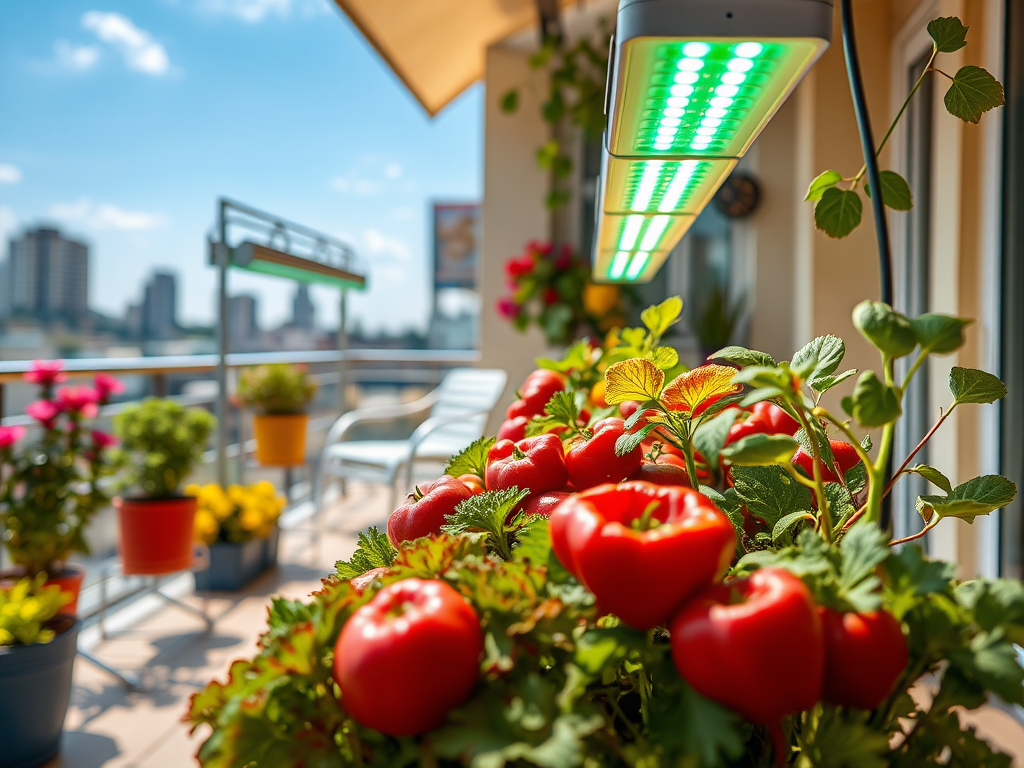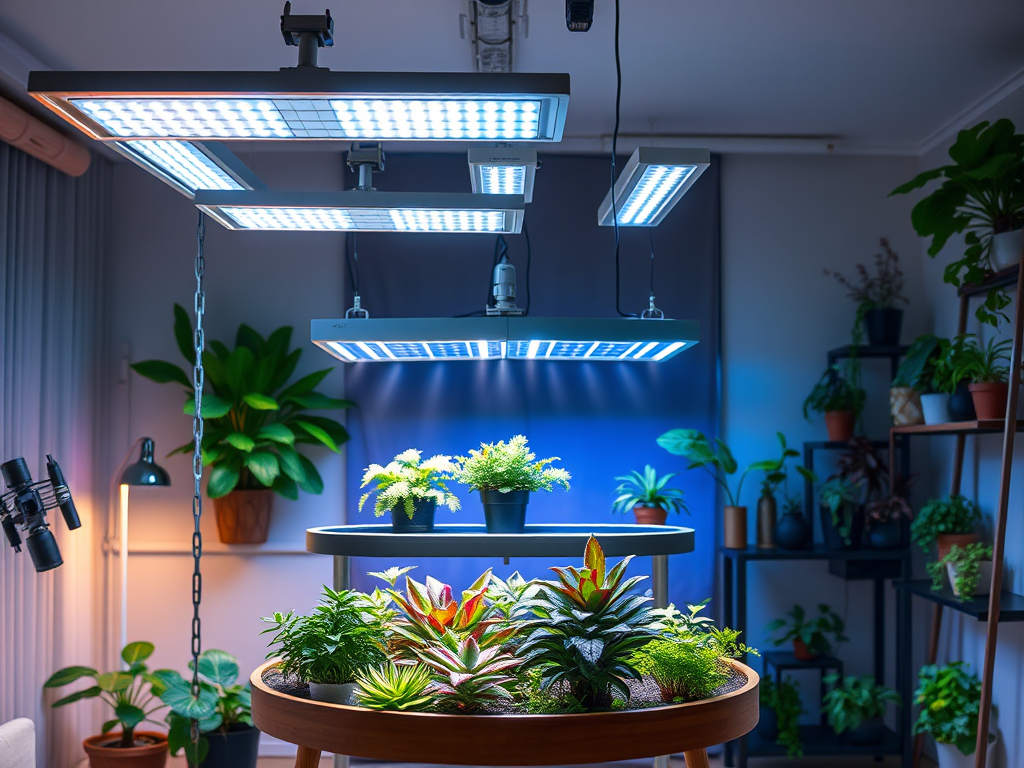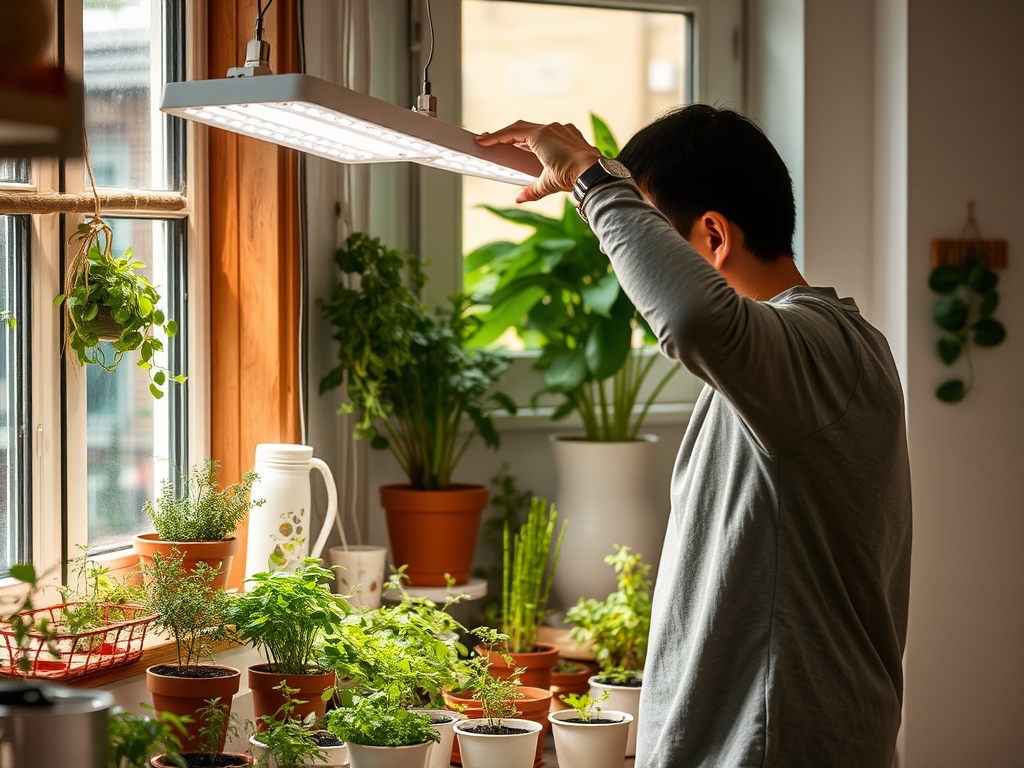Urban gardening has transcended from a simple hobby to a fundamental element for many city dwellers striving to reconnect with nature. In densely populated areas, having access to fresh produce is often limited, leading urban enthusiasts to seek alternative means of cultivation. For many, the solution lies in harnessing the power of plant grow lights. These lights not only mimic the sun’s beneficial rays but also provide the necessary environment for plants to thrive. As more individuals venture into urban gardening, the significance of understanding grow lights has become paramount. Let’s delve into how these lights can transform your urban gardening experience.
What Are Plant Grow Lights?

Plant grow lights are specialized artificial lighting systems, created to provide optimal light conditions for plants. Unlike regular light bulbs, which lack the appropriate light spectrum, grow lights are tailored to emit the wavelengths essential for photosynthesis. This means urban gardeners can create perfect growing conditions indoors or in areas with limited sunlight. In essence, they allow you to control the light, enabling you to grow a variety of plants no matter the external conditions. There’s an array of grow lights available, ranging from basic incandescent bulbs to advanced LED systems. Each type comes with its unique advantages, catering to different stages of plant growth.
The Importance of Light in Plant Growth

Understanding the role of light in plant growth is crucial, especially for those living in urban settings. Plants utilize light to perform photosynthesis, the process through which they convert light energy into chemical energy. However, in cities, natural light can be obstructed by buildings, trees, and other structures. This limitation can significantly hinder growth, particularly for light-dependent plants. Knowing the different light spectra and their effects can empower urban gardeners to make informed decisions about their setups. It can mean the difference between a thriving garden and stunted plants.
- Blue Light: Crucial for vegetative growth, it encourages leafy foliage and is especially important for seedlings.
- Red Light: Essential in promoting flowering and fruiting, it supports plants as they transition to their reproductive phase.
- Full Spectrum: Mimicking natural sunlight, it provides a balanced light source that enhances overall plant health.
Benefits of Using Grow Lights in Urban Gardening
Extended Growing Seasons
One of the most notable advantages of incorporating grow lights into urban gardening is the ability to extend the growing season. With the right lighting, urban gardeners can cultivate plants year-round. This is particularly useful in regions with harsh winters, where natural sunlight is scarce. By providing consistent artificial light, you eliminate the dependency on weather conditions, allowing crops to mature at their own pace. Grow lights empower you to plan your garden without seasonal limitations, ushering in fresh veggies and herbs throughout the year. This flexibility is a game-changer for many urban gardeners eager to enhance their culinary experiences with home-grown produce.
Improved Plant Health and Yield
Using grow lights can also lead to significant improvements in plant health and yields. Plants grown in optimal lighting conditions typically produce higher quality fruits and vegetables. Adequate light reduces stress on the plants, allowing them to focus energy on growth and production rather than merely surviving. This factor is particularly crucial in urban environments, where competition for resources can be intense. Grow lights not only ensure that plants receive the necessary light but also create a controlled environment. This level of care can yield an abundant harvest, making your urban gardening efforts rewarding in more ways than one.
Versatility and Convenience
Grow lights boast impressive versatility, adapting to various growing conditions and preferences. The options range from LED lights, which are energy-efficient, to fluorescent ones that are ideal for seedlings. Incandescent lights, though less common due to their energy inefficiency, can still serve specific purposes. Each type of grow light has its unique benefits, tailored to meet the diverse needs of urban gardeners. This adaptability allows you to create customized setups suitable for different plants and spaces, ensuring that every green ambition can be realized, regardless of the urban landscape.
| Type of Grow Light | Advantages | Disadvantages |
|---|---|---|
| LED Grow Lights | Energy-efficient, long-lasting, suitable for all growth stages | Higher initial cost |
| Fluorescent Grow Lights | Cost-effective, good for seedlings, low heat | Short lifespan compared to LEDs |
| Incandescent Grow Lights | Inexpensive, easy to find | High energy use, generates a lot of heat |
Choosing the Right Grow Light
When selecting grow lights for your urban garden, several factors come into play. You need to consider light intensity, energy efficiency, and heat output to ensure you achieve the best results for your plants. Understanding your specific gardening needs is key to making the right choice. Moreover, evaluating the growth stages of your plants helps in identifying which type of lighting setup to implement. The right grow light can be a game-changer, affecting not just growth speed but also health and yield. A well-informed decision tailored to your gardening goals can lead to a flourishing green space, even amidst the concrete jungle.
Conclusion
In conclusion, plant grow lights are invaluable tools for urban gardeners, offering the means to overcome challenges posed by limited natural sunlight. They empower enthusiasts to maintain healthy, productive gardens regardless of external conditions. With the vast array of lighting options available, understanding how to leverage these tools allows for an optimized growing environment. As more people embrace urban gardening, the insights gained from utilizing grow lights are sure to drive innovation and creative solutions. By harnessing technology to support plant life, urban dwellers can transform their spaces into lush, green oases, cultivating both food and joy.
Frequently Asked Questions
- What are the most effective types of grow lights for urban gardening?
– LED Grow Lights are highly efficient and effective for all growing stages.
– Fluorescent Grow Lights work well for seedlings and small plants.
– Incandescent Grow Lights are less efficient but can be used for specific applications. - How much light do indoor plants need?
– Most indoor plants require 12-16 hours of light daily, which can be adjusted based on the plant species. - Can grow lights replace natural sunlight?
– Yes, high-quality grow lights can effectively replace natural sunlight, but it’s essential to choose the right spectrum and intensity for your plants. - Are grow lights energy-efficient?
– LED grow lights are the most energy-efficient option available, consuming less electricity while providing the required light for plant growth. - Do I need a timer for my grow lights?
– Using a timer is beneficial to ensure plants receive consistent light cycles, mimicking natural sunlight conditions.


